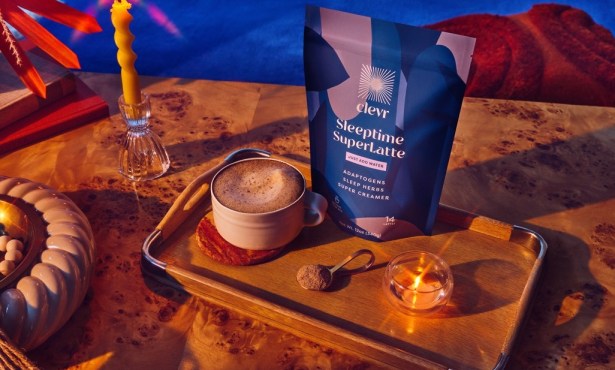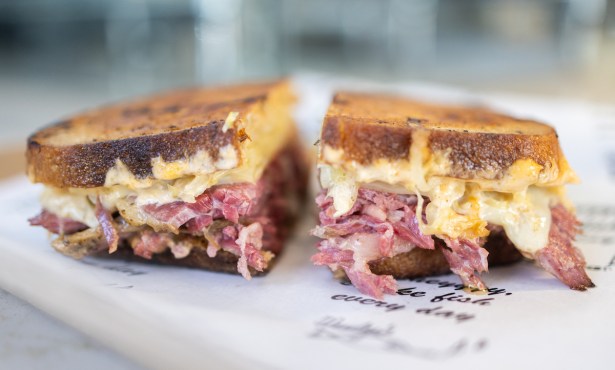Feast of Apicius Celebrates Ancient Epicurean Traditions
Chef Pete Clements Talks Forcemeat; Plus, More Food Fests in Coming Weeks
For your sea scorpion, a type of horseshoe crab? Just cook with pepper, caraway, parsley, fig-date wine, honey, vinegar, broth, mustard oil, and reduced wine. For your dormouse, a large rodent? Stuff with ground pork and dormouse innards along with pepper, nuts, broth, and laser (a now extinct herb also known as silphium), and then roast. What about that flamingo? Parboil it with salt, dill, and vinegar, and then finish with leeks, coriander, and, for color, some grape must. Serve with an herb sauce, just like you do parrot.
These are just a few of the (admittedly more obscure) recipes in Apicius de re Coquinaria, a cookbook from Roman times published in the first century. Check it out here. It was named for, and presumably influenced by, Marcus Gavius Apicius, arguably the world’s first gourmet. Legends of his foodie feats abound. Apicius was known to hold lavish feasts, travel across the Mediterranean in search of special shrimps, and stuff pigs with figs and then poison them with honeyed wine to make a sort of pork foie gras.
In recognition of his epicurean advancements and hedonistic excesses, Inside Wine Santa Barbara is hosting a Feast of Apicius on October 20, when 13 chefs will put their modern spin on these ancient recipes, to be paired with much more recent vintages from 13 wineries. The idea came from Inside Wine’s leader, Tama Takahashi, who learned about Apicius during one of her Italian lessons via Skype with a teacher in Tuscany.
“His love for fine and exotic cuisine reverberated with my passion for all things pertaining to food,” explained Takahashi, who held a similar event last year, which includes judges selecting the best pairing. “I dug a bit deeper into the subject and the thought occurred to me that our society and that of first-century Rome are similar in access to ingredients from around the world and ability to spend ample amounts of time preparing them in novel ways.”
Chef Drew Terp of Pico, for instance, will be serving figs in honey, medlar-and-calf sweetbreads, and bacon, his spin on Ficum Recentem, Patina de Sorbis Calida et Frigida — but using sweetbreads instead of brain. Chef Oscar Ledesma of The Little Door is preparing duck/foie gras pâté with mostardo and fruit sauces, his rendition of Liver Kromeskis Omentata, opting for poultry rather than pork liver wrapped in organ lining. Chef Nimita Dhirajlal’s whole roasted fish with herbs, meanwhile, may be rather similar to the simple Pisces Assos recipe.
One of the more intriguing items will be the sliders on must rolls with beans by Chef Pete Clements. His inspiration came from Mustacei (a flour cake with freshly crushed grape juice, or must, that was baked on laurel leaves), Isicia Omentata (rough translation: meat sausage), and Fabaciae Virides et Baianae, also known as beans cooked in broth.
“This guy was pretty much the Escoffier of his time,” said Clements of Apicius, referring to Auguste Escoffier, who codified French cooking a century ago and set the stage for today’s culinary scene. “There was a lot of development and research and trial and error put into finding ways to cook and use fats, instead of just curing and storing food that was disgusting.”
Raised in Orange County, Clements had a mother who was a nationally syndicated food columnist and a cooking school owner, so he started working in restaurants as a teenager. He came to Santa Barbara to cook in 1985 and never left, working at Louie’s, San Ysidro Ranch, and Emilio’s, which he built into one of Santa Barbara’s best restaurants in the 1990s. After executive gigs at Cottage Health and Natural Café, he started his own catering company in 2006 and now does about 150 events per year.
He was drawn to the cookbook’s many recipes for forcemeats. “They’d take pig, deer, horse, pretty much anything that had muscle, hand chop and use grinding stones, and make this mush and add fat into it,” said Clements, as that would preserve the meat for a few more days. “A lot of time they would forage for certain roots and vegetables to add flavor, so then they had this base meat.” It was a sort of sausage that could be piped into casings or cooked in bulk. Much later, during Escoffier’s time, forcemeats evolved into pâtés, terrines, and other molded meats, often baked in pastry.
“I’m doing the same thing, and will be mixing a bunch of meats, grinding with back fat, and seasoning with bay leaf, mace, juniper berry, and allspice, stuff that was readily available because ships were bringing it around the world,” explained Clements. Then he’s making a “must roll” that will be more like brioche but with a bit of acorn flour to give some grit; Clements assumes those ancient rolls — in which must was used to start fermenting the dough — probably would have been very hard. (Interestingly enough, when Clements started making dough at Emilio’s just a quarter century ago, he also used grapes to start his dough.)
“If you stuck to anything from those times that was made exactly as it was, it would almost be inedible to our palate today,” said Clements, noting the meat would be tougher, the produce more fibrous, and so forth, because domestication and hybridization had not yet taken over. “It would be a tough meal to put down for sure.”
Certainly, what Clements and the other chefs are up to will be much easier to enjoy, alongside some of the Central Coast’s top wineries as well.
4•1•1
Inside Wine Santa Barbara’s Feast of Apicius is on Saturday, October 20, 2-5 p.m., at the S.B. Museum of Natural History (2559 Puesta del Sol). Tickets are $50 and available at tinyurl.com/Apicius2018.

More Food Fests to Taste!
GELATO FESTIVAL AMERICA: Take a class at Gelato School, enter the Gelato Eating Contest, or be a kid judge in determining which gelato is best at this year’s Gelato Festival America, coming to La Cumbre Plaza on Saturday and Sunday, October 13 (noon-8pm) and 14 (noon-7pm). Tickets are $30 or $15 for kids at the door, but $5 cheaper online at gelatofestivalamerica.com/ticket.
HARBOR FEST’S WINE & SEAFOOD PAIRING: On Saturday, October 13, noon-3 p.m., fish fans can up their game during the 17th annual Harbor & Seafood Festival by attending the S.B. Maritime Museum’s Wine & Seafood Pairing on the museum steps. Six restaurants (Bluewater Grill, Bree’Osh, etc.) are paired with six wineries (Flying Goat, Seagrape, etc.) Tickets are $30 via sbmm.org or (805) 456-8747 or $40 the day of.
RAMENFEST RETURNS: The $35 tickets always sell out fast for Ramenfest, which celebrates its fourth year on Sunday, November 11, noon-3 p.m., at the Goodland Hotel (5650 Calle Real, Goleta). Chefs from around the region will battle for the “Ramen King of Santa Barbara” crown while attendees sample their noodles, sip on Japanese whisky and Draughstmen beer, and listen to DJ Darla Bea. See nightout.com.



